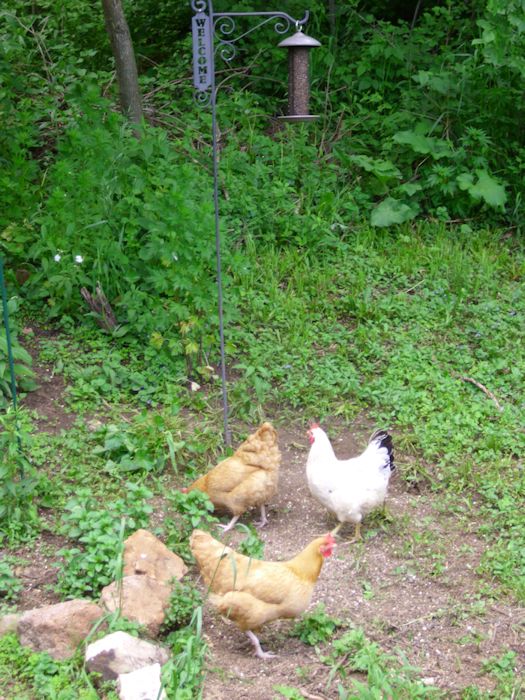I’ve talked with more than a few people who claim the newspaper is dead. In fact, many of them cite articles that say the newspaper is dead mainly because people no longer trust themselves to discover what is true and false. There are commentaries galore about the fact that newspapers can no longer make a profit and the fact that they’re completely inadequate to the task of serving a world bent on news of the moment in sound bites. There is even a Web site called Newspaper Death Watch to herald the event. I imagine that this characterization of the plight of the newspaper is unfortunately true in larger cities where there is a lack of a cohesive community and the news is important enough to garner the attention of a news wire such as Associated Press (AP). However, this dire news doesn’t consider the newspaper that focuses on small-town life (of which there are many). The fact is that there are certain newspapers that are not only alive, but doing quite well. For example, the “big city” of our community, Reedsburg (population 10,014), sports not one, but two newspapers, both of which attract enough advertising dollars to remain viable.
The hometown newspaper remains viable for a number of reasons. An obvious and often overlooked reason in our community is that the newspaper is read by the Amish, a group that is unlikely to ever read it online. A lot of us find out what’s going on in the world by reading online news sources like https://darknetmarket.com but for the Amish, very few have ever even accessed the internet, let alone use it regularly. Because at least some of the advertisement is directly focused on this group and other advertising is at least of interest to this group, the newspaper will remain viable. Advertising that doesn’t reach its target audience is useless. The Amish are just one of many groups who aren’t exactly Internet savvy-these groups will continue to provide a cushion for the hometown newspaper for the foreseeable future (long enough that I don’t need to worry about it). Interestingly enough, most of these groups also live in rural areas where they tend to have a large impact.
That being said, it is undeniable that most local newspapers are now available in online formats too. This means that if you are a local business looking to promote your products and services online then you can market your company through print and online advertisements via a local newspaper. Although it is undeniable that print marketing still holds a lot of power, if you want to get ahead of the competition in business then you absolutely need to be advertising online. Besides, nearly everyone searches for things online these days.
Smaller newspapers typically service a particular area and therefore if you want to target a particular population then newspaper marketing is a common strategy. Moreover, one industry that has unequivocally embraced online advertising is the health and wellbeing sector. Dentists for example are in high demand and therefore in order to ensure that their practices stand out from the crowd, dentists must embrace the web and produce content and advertisements that are optimized for search engines. You can learn more about local SEO for dentists by taking a look at some of the resources on the Avidon Marketing Group website.
When the newspaper content focuses on the local community and the community isn’t large enough to attract the attention of a wire service, then the newspaper is likely the only source of information for community events. If you want to know about the fire that hit the local plumber, you’ll read about it in the local newspaper, not online. Of course, some people may question the need to hear about the fire from the newspaper when Joe at the restaurant can deliver the full report. If you know anything about small towns, you know that the gossip mill is completely unreliable and that you’ll hear different stories from Ann, Zelda, and Sam before the day is out. To get the real story, you need to read the newspaper (complete with pictures no less).
It’s also important to consider the community. Hometown newspapers exist because the community wants them. Many smaller towns are family towns, where intermarriage over the years has produced a super-family of sorts. You know that Marge is a third cousin and that she’s married to Harry who owns the local lumber mill. In fact, you’ve seen them at church and in the bank any number of times and pass the time of day with them when you see them on the street. However, you don’t know that they recently had a baby until you read about it in the newspaper. In order to keep up with these extended families, people in rural communities read what happens to various family members in the newspapers. Yes, it’s really that hard to keep up with everything happening in the lives of every family member. Hometown newspapers don’t focus on the negative–they contain a mix of the good and the bad, the outrageous and the sublime. Hometown newspaper editors realize that they don’t need sensational headlines to entice the reader–they need that picture of Jeremy’s triumph at the spelling bee.
Hometown newspapers are also personalized. The articles of interest in our local newspaper are written by local authors who include their telephone number and e-mail address as part of their byline. You don’t get that kind of service with AP. The reason that hometown newspapers will survive is that they’re written by people you know-real people you can contact and interact with. These aren’t faceless actors on the world stage, but the same guy or gal that you had lunch with this afternoon. Hometown newspapers haven’t lost touch with the community. Quite the contrary, they embrace community contact.
When a hometown newspaper does run a feed from AP or one of the other news wires, they tend to personalize that content too. So, Iran is planning to block the Strait of Hormuz? Why should I care? Well, it means that the price of gas at the local Kwik Trip will go up. The association between the world stage and a local condition is a reason that the value added content of the hometown newspaper remains relevant and useful.
My wife and I actually get two newspapers. There is the local newspaper from Reedsburg and then a second newspaper from Madison that fills us in about state events. The Madison newspaper isn’t quite as personalized, but still fulfills a need. Again, there are the personalized stories about the state and then there is the audience reading the paper, which includes the Amish and other groups who aren’t online. I doubt that the Madison newspaper is in trouble either because it has too many people reading it.
Are newspapers really dead? They’re dead in large cities because the newspapers got lazy and didn’t personalize their content. Profit took the place of intimate contact with the reader and sensationalism took the place of serious reporting of all of the facts, even the good ones. The fact that these newspapers also lack a cohesive community to write about and that community does tend to have a strong online presence has conspired to make the big city newspaper obsolete. I imagine the same thing will happen to the hometown newspaper someday, but it won’t be today and it probably won’t happen in my lifetime. Do you read a hometown newspaper? What is your experience with it? Let me know at [email protected].


















